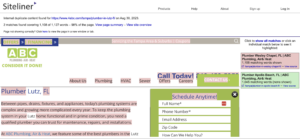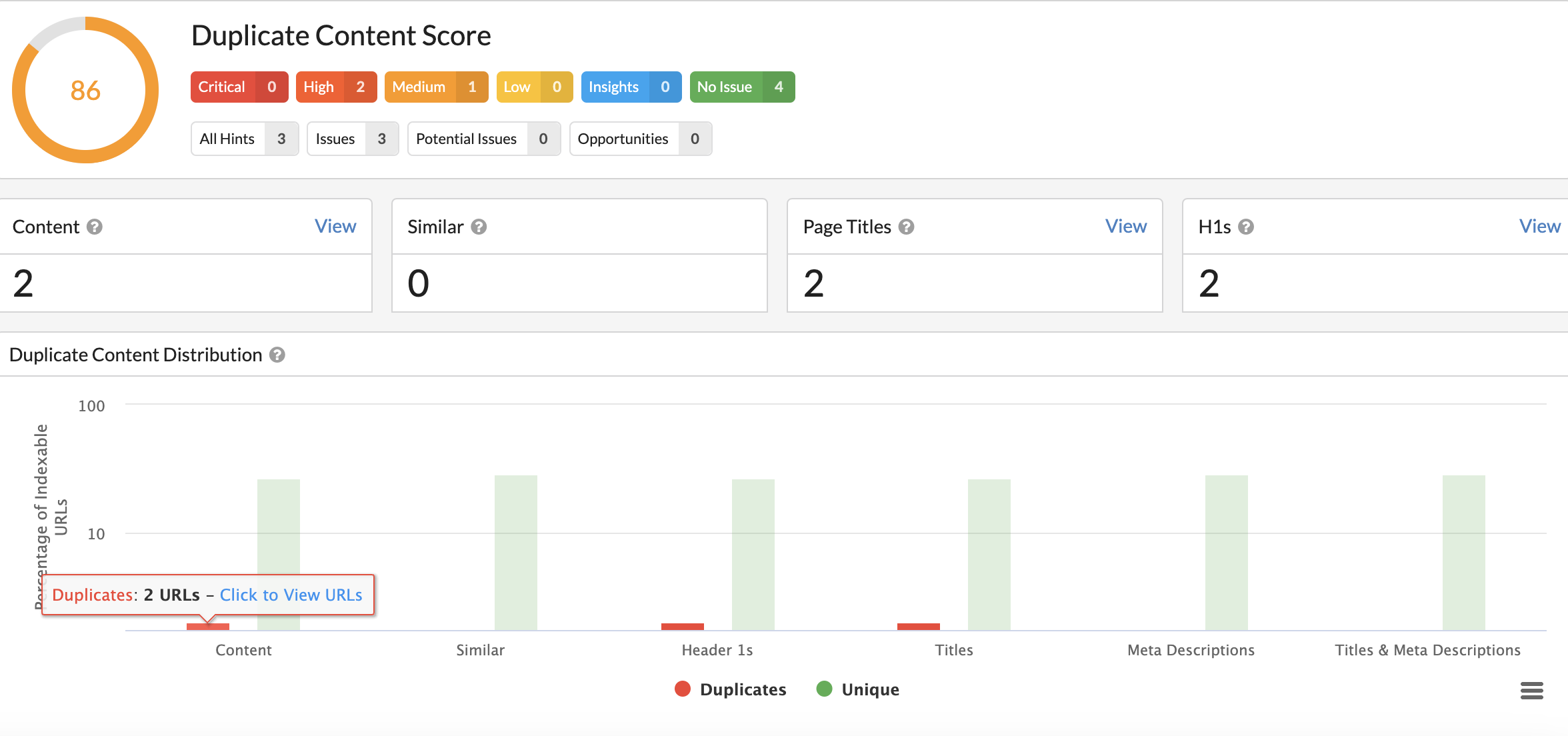We always hear the phrase “content is king.” It’s usually in reference to content creation. You should create great new content to reel in your audience, rank for more keywords, build your topical authority, etc. What about your existing content? Think about those blog posts that were published and left behind – never to be looked at again.
You’re likely sitting on a goldmine with your client’s existing content. These pages could already be ranking for valuable keywords or have acquired quality backlinks. By taking advantage of what’s already there, you’ll likely see a higher ROI vs. creating new content.
Let’s dive more into why you should be refreshing your content, the different types of content that requires updates and how to identify them.
Why Should I Refresh Content?
There are so many reasons why you should refresh your content, from updating outdated information to testing out how FAQs impact a page’s performance. This can depend on yours or the client’s needs. We’ll go over some impactful reasons why you should be refreshing your content.
Improve Traffic and Conversions
As you publish more new content, this old content gets put on the back burner. Neglecting to update these pages with new information and internal links will result in a decrease in traffic over time.
By keeping these pages updated with helpful information, you will maintain or improve the influx of traffic to your site. If that page never really received much traffic to begin with, updates could actually help it improve organically.
Another thing to keep in mind is that by refreshing existing content, you can improve conversion rates. By updating outdated content, replacing broken links, and correcting any CTAs or forms on your site, you are improving the user experience. You are making it even easier for visitors to spend their money with you.
Build Link Equity
Existing content also may have the benefit of link equity. According to Moz, link equity is “…the idea that certain links pass value and authority from one page to another.” This can be done through both internal and external links.
![]()
Link equity is closely tied to PageRank, which is a ranking factor. Essentially, the greater a page’s link equity, the higher its likelihood of ranking. This is not definitive. Just because a page has 1 million links does not mean it will automatically rank.
By adding internal links from older content to newer content and vice versa, you can pass link equity. Internal links help pages on your site get discovered by Google and shows crawlers which pages are the most important on your site. While we are currently focusing on the importance of internal links for your refresh strategy, it is important to note that they should also be integrated into your overall content strategy and SEO strategy.
Improve Overall Site Quality
By refreshing old content, you will be improving the overall site and content quality. Broken links, duplicate content, and poor quality content in general drag down your entire site. This has only become more important than ever since the Helpful Content Update. Google states that “Any content — not just unhelpful content — on sites determined to have relatively high amounts of unhelpful content overall is less likely to perform well in Search, assuming there is other content elsewhere from the web that’s better to display.”
Focusing on the content that’s already there yields bigger results once updated vs. starting fresh with a new page. By refreshing existing content, you’ll improve your site’s quality, and quality is more important than quantity.
How to Identify Content That Needs Updating
Identifying content to update shouldn’t be that hard. You have a few ways to go about it:
- Sitebulb or Screaming Frog: By using Sitebulb, you can crawl your entire site to find duplicate content, pages with linking issues (broken links, no internal links, etc), and use Google Search Console and Google Analytics data to view underperforming pages.
- Google Search Console (GSC): You can use GSC to compare the performance of page’s on your site and find which ones are declining in clicks and impressions. You can filter and select “Compare last 6 months to previous period” and then toggle with the “Clicks Difference” and “Impressions Difference” to find queries that are bringing in less users.
- Ahrefs or Semrush: You can use tools like Ahrefs or Semrush to identify keywords that are declining in rankings or keywords that are performing decently but could be performing better. We’ll show you how to do this in the next section.
- Content Repository: If you or your team has an internal content tracking tool, you can leverage it to determine when a piece of content needs to be updated. It could be as simple as seeing when was the last time anyone did anything to that page. If you don’t have an existing tool to track content, it’s as simple as creating a spreadsheet with URLs, publish dates, last updated dates, and a column to document your changes.
Types of Content to Update
Duplicate Content
Addressing duplicate content is probably one of the first things you should take care of when deciding to refresh your site’s content. It’s important to stress the fact that there is no such thing as a duplicate content penalty. Having multiple pages with the same content lowers the site’s overall quality and by having poor quality content on your site, you can run into indexing issues. Each page should have a purpose and provide value.
Indexation is a privilege. With duplicate content, you are leaving it to Google to decide which page of those 50+ pages is the best depiction of that information. Deciding to refresh duplicate content and ensuring each page provides unique value to visitors will help improve your site’s quality and increase the likelihood of indexation.
Local businesses often see duplicate content issues with location pages. Usually it’s a boilerplate page with the city name switched out across several different areas. As mentioned earlier, we recommend using Sitebulb or Screaming Frog to crawl your site for duplicate content. You can also use Siteliner, a free tool, to test this out. Once you have your duplicate content identified, come up with a plan to update or delete and redirect those pages.

Outdated Content
Another opportunity to update existing content on a site is to look at old or outdated pages. You can crawl and find publish dates or if you have an internal content tracking system, take a look at the last time a piece of content was updated.
It creates a good user experience to provide the most updated information available. For outdated content, it’s best to approach it with a pruning audit. This is where you’ll crawl your site and use GSC and GA4 data to determine what to keep and refresh, and what to delete. Use your own discretion on what’s best for users when it comes to each piece of content.
If a page is outdated and the topic is no longer relevant, feel free to delete that page (ex: Company news that’s no longer relevant). If a page has some information that can be updated, like seasonal content (ex: Thanksgiving plumbing tips), then plan to update it each year. It’s best to do the higher priority, but lower effort content updates first to get those quick wins. Then you can move on to the high priority and higher effort pieces of content to update.
Updating outdated content should be a high priority in general. This can negatively affect user experience if they find outdated content on your site. Users may not trust you after seeing it, and bounce to a competitor who has more up-to-date content instead.
Underperforming Content
When a piece goes live, you should check its performance regularly. From clicks to time on page to conversions, there are a lot of different metrics to check to determine the performance of a page. This is how you know if your content had any impact on your client. If you aren’t checking in on your content’s performance, then what’s the point of creating content?
If you have an underperforming piece or your client wants to know how they can attract more people to their site, it could be as simple as going back and refreshing old content. Analyze each page to determine what the best course of action is. Ask yourself the following:
- Does the page have business value?
- Is it truly helpful to the user?
- Does it answer any and all questions a user would have?
- Are there a good number of backlinks to the page?
If the answer is no to all of these, it’s time to prune. If you want to keep the content for any reason, then you should determine what information is missing from that page or what areas of it could be improved and update it.
Striking Distance Keywords
Striking distance keywords provide a great low hanging fruit opportunity. These are keywords that rank at the bottom of page one or on the second page (positions 6-20), which means that these pages are doing well for these topics, but could be doing better.
We recommend doing content research and a SERP analysis to identify areas of the page where its content can be improved to help push it to the first page or the top of the first page. You are able to get a quick win from these keywords compared to starting scratch with new content.
Refreshing Your Content for Success
Recognizing the untapped potential of your existing content can help improve your traffic, conversions, and overall site quality. Before exploring new opportunities, remember the untapped potential of your existing content. By revisiting and leveraging this valuable resource, you can provide a great user experience and rank well in the SERPs.



